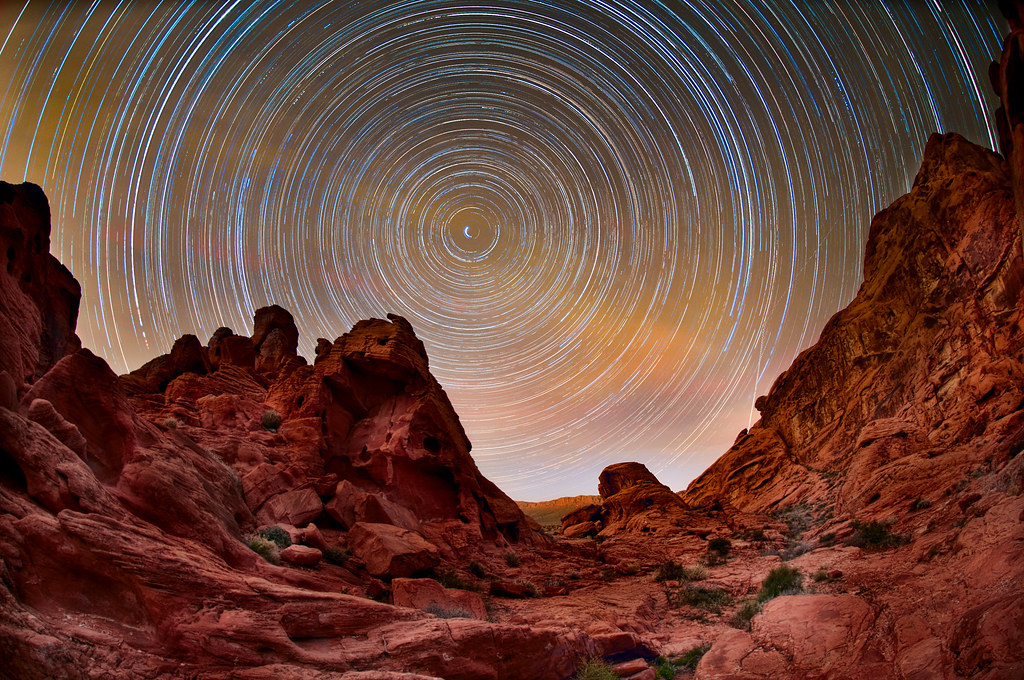From Death Valley I drove across the suprisingly wild and beautiful uplands of Lake Mead National Recreation Area, and photographed Hoover Dam (more on these locations in a later story). I stopped at Valley of Fire, a Nevada state park.
To make this image, the most important point was to find a north facing location where I wouldn’t be disturbed, and where the ambient light pollution from Las Vegas (some 50 miles away) would be blocked by nearby rock formations. This light pollution was surprisingly intense; indeed, I don’t think one can really find a truly dark night sky within a hundred miles of Las Vegas, even when shooting in the dark of the moon (as I was).
The lights of Las Vegas were one thing. As the night wore on, the cloud cover increased, which also amplified the Las Vegas light, because it bounced off the clouds. I began to be seriously worried that there wasn’t enough contrast between stars and sky to pull this image off.
The final image is a stacked composite of 129 4 minute exposures, roughly 8 hours and 36 minutes total exposure time. I shot each exposure at f/2.8 and ISO 400, with my 10.5mm digital fisheye. For me, this is an exposure that really blasts the photons to the right side of the histogram, verging on overexposure.
Like the Death Valley image, I processed the RAW files in Adobe Photoshop CS5 Statistics—primarily using Maximum mode. I processed a second stack through—it took all night—in Median mode (essentially using an average pixel value), and blended it with the first stack using Soft Light at low opacity to partially compensate for the crazy ambient light pollution.
If you are interested in learning how to make images like this, please consider joining me for the annual Star Circle Academy workshop and night photography fest in the Alabama Hills area of the eastern Sierras in early November.

Pingback: Snapshot for March 7th, 2011 | Aspiring Shutterbug
Pingback: Night Sky, New River | Photoblog 2.0
Pingback: Horseshoe Bend in the Dark of the Moon | Photoblog 2.0